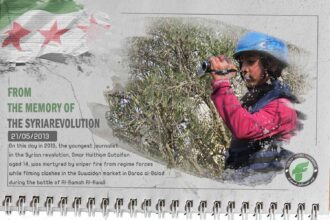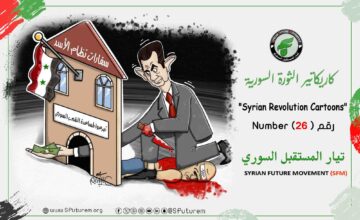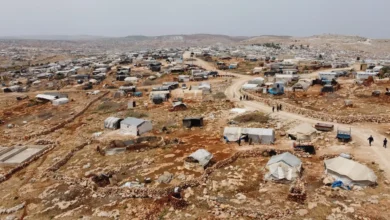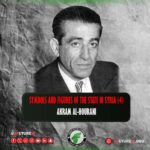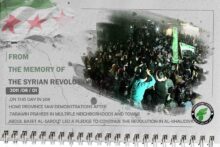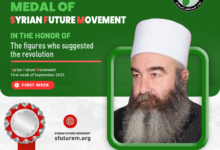Symbols and Figures of the State in Syria (9): Abd al-Rahman al-Shahbandar
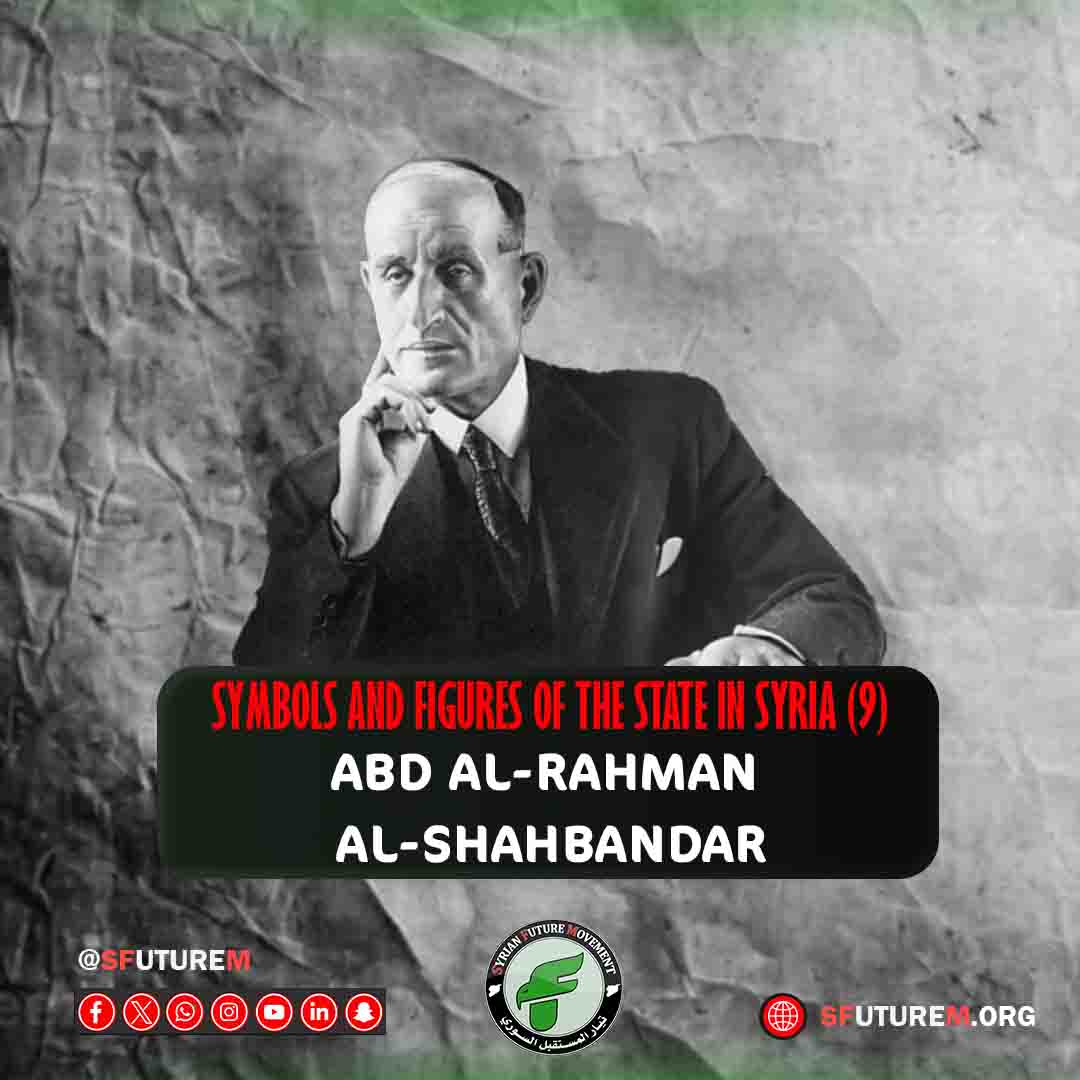
- Born in the Al-Qaymariya neighborhood of Damascus in 1879, he came from a middle-class Damascene family. His father was Mr. Saleh Al-Shahbandar.
- He received his primary and secondary education in Damascus and traveled to Lebanon to study medicine at the American University of Beirut, graduating in 1906.
- In 1910, he married Sara Al-Muayyad Al-Azm, the daughter of Taqi Al-Din Pasha Al-Muayyad Al-Azm.
- At a young age, he joined the reformist circle opposed to Ottoman rule, led by Sheikh Taher Al-Jazairi.
- He was brought to trial on charges of participating in the authorship of a treatise on (jurisprudence and Sufism) and nearly imprisoned due to an article in the Egyptian newspaper Al-Muqattam concerning the succession of Sultan Abdul Hamid II. However, his young age at the time saved him from imprisonment.
- He traveled to Lebanon to study medicine at the American University of Beirut in 1902, and after graduating, the university selected him as a professor and a physician for its students.
- In 1908, he returned to Damascus and connected with some of the Ottoman opposition, such as Abdul Hamid Al-Zahrawi, and the Arab nationalists following the Ottoman coup in July of that year.
- He participated in the founding of Arab associations.
- The Unionists resorted to oppression and brutal tactics after the outbreak of World War I, prompting Dr. Abdul Rahman Al-Shahbandar to flee to Iraq to escape Unionist persecution.
- He then traveled from Iraq to India and later to Egypt.
- In Egypt, he took over as editor-in-chief of Al-Kawkab newspaper but left the position after realizing its alignment with British policy.
- He and six of his Syrian colleagues sought a pledge from Britain, known as the “Pledge of the Seven,” stipulating that any Arab lands liberated by the Arab army would remain Arab and independent.
- Because of this, he openly called for cooperation with the British during World War I.
- Later, he supported the Sharif Hussein’s revolt against the Unionists and called for volunteering in his army to confront the Turks and secede from them.
- He returned to Damascus in 1919 after Syria gained independence from Turkish rule.
- He and his nationalist colleagues contributed to proving Syria’s ability to achieve independence before the American Inquiry Commission (the King-Crane Commission) during the Paris Peace Conference in 1919, which sought the opinions of the people of Syria and Palestine on the future of their countries.
- In the Syrian government headed by Hashim Al-Atassi in May 1920, Al-Shahbandar assumed the position of Syrian Foreign Minister.
- The government fell with the entry of the French and their imposition of the mandate on Syria following the Battle of Maysalun.
- He left Syria for Cairo, but returned after a year and began organizing political activities to resist the French occupation.
- As a result of his political and nationalist activities, and following the arrival of Mr. Crane in Damascus in 1922, who was met with crowds demanding freedom and independence, the fulfillment of the Allies’ promises, and particularly the Americans, in calling for the end of the mandate, the French arrested many Beirut and Damascus residents, including Dr. Abdul Rahman Al-Shahbandar. He was sentenced to twenty years in prison and exile to Beit Al-Din in Lebanon, then to the Syrian island of Arwad.
- After nineteen months, he was pardoned and traveled to Europe and America to advocate for the cause of his homeland and Arabism, becoming one of the first Syrian leaders to present the national issue before international forums.
- In July 1924, Al-Shahbandar returned to Damascus, where he founded a political party named the People’s Party and assumed its leadership, adopting the title of “the leader.” He began organizing political activities anew, calling for Arab unity, demanding the abolition of the mandate, and establishing a Syrian Republic within a union with all independent Arab countries. To achieve this, Dr. Abdul Rahman Al-Shahbandar began contacting leaders and dignitaries of Syrian cities, urging them to revolt against French colonialism, instilling in them a sense of national pride, and encouraging them to start armed resistance to gain independence and realize the national dream of establishing an independent Syrian state.
- Dr. Abdul Rahman Al-Shahbandar’s most significant step was the founding of the People’s Party in July 1924.
- He communicated with leader Ibrahim Hananu in the northern region and met with the dignitary Mohammed Bey Al-Ayash in Damascus, agreeing with him to extend the revolution to the eastern region. He was also in contact with Commander Fawzi Al-Qawuqji, who was preparing to ignite the revolution in the city of Hama, despite being known for his strong loyalty to the French, having attained a high rank and position in their army (Command of the National Army in Hama), a status rarely achieved by other Syrians. However, according to Al-Shahbandar’s memoirs, Al-Qawuqji was disgruntled by the imprisonment and humiliation of Hama’s dignitaries and scholars, the division of the country into governments, the employment of the lowliest individuals in official positions, the increased taxes on the taxed, and the incitement of sectarian strife among the Syrian people.
- Al-Shahbandar supported the Syrian revolution with all his capabilities and energies. However, after a year of its inception, the revolution began to weaken, leading Al-Shahbandar to withdraw with Sultan Al-Atrash and their comrades to Azraq in Jordan, from where he traveled to Iraq and then to Egypt after a French death sentence was issued against him.
- He was forced to stay in Cairo for about ten years, during which he continued to work for the Arab cause in cooperation with the Executive Committee of the Syrian-Palestinian Congress, in addition to practicing medicine.
- After the death sentence was annulled, he returned to Damascus on May 11, 1937, where he was warmly welcomed by the masses. His colleagues, brothers, and supporters organized public celebrations for him every day, attended by thousands of men from various neighborhoods, dignitaries, and different social classes.
- In his speeches, he attacked the 1936 Treaty with France, detailing its flaws and enumerating its disadvantages, causing a stir in the country and leading to a division among the people. Some supported the treaty and the National Bloc led by Hashim Al-Atassi, while others rallied around Dr. Al-Shahbandar, convinced of his perspective on the treaty’s disadvantages, its flaws, and the need to fight for complete independence and absolute sovereignty.
- He delivered forty speeches in twenty-one consecutive days, during which no grammatical errors were noted, and no ideas or opinions were repeated.
- On the morning of July 6, 1940, a group assassinated Dr. Abdul Rahman Al-Shahbandar in his clinic in the Al-Shaalan neighborhood of Damascus.
- The blame was placed on three leaders of the National Bloc: Saadallah Al-Jabiri, Jamil Mardam Bey, and Lutfi Al-Haffar, forcing them to flee the country after arrest warrants were issued against them by the French authorities on the night of October 15-16, 1940.
- This event had a significant impact on the Syrians, who took to the streets in large demonstrations condemning his assassination and demanding that the government and French authorities expose his killers.
- A large funeral procession was held for Dr. Al-Shahbandar, and he was buried next to the tomb of Salah al-Din al-Ayyubi near the Great Umayyad Mosque.
- Later, the perpetrators were arrested, and they confessed to their crime, claiming that the motive was religious and political. They alleged that Al-Shahbandar had insulted Islam in one of his speeches, that he was an agent of the British, and that they committed the crime in revenge and retaliation for the true religion and nationalism.
- Al-Shahbandar was the mind behind the Great Syrian Revolution and Syrian society, tirelessly working since the early century. He left no field for enlightenment and influence untried, working in medicine, politics, journalism, teaching, and translation. He compiled his articles in a book published under the title “The Great Arab Issues” and another titled “Al-Shahbandar’s Memoirs.”
- A square in the heart of Damascus was later named Al-Shahbandar Square.
In the Syrian Future Movement (SFM), as we recall the founding figures of Syria, we honor one of Syria’s influential figures, and one of the symbols of the early Syrian state who played a role in shaping its structure, the patriotic doctor “Abdul Rahman Al-Shahbandar.” We present this as part of a series on the symbols and notable figures of the Syrian state, aiming to connect our contemporary revolutionary present with a strong past and significant historical milestones. Our hope is to revive in our people the need to build and cultivate distinguished statesmen, learning from their experiences and building upon their legacy, to preserve the nation, safeguard its achievements, and restore Syria’s honor and glory after years of oppression, tyranny, and corruption.
